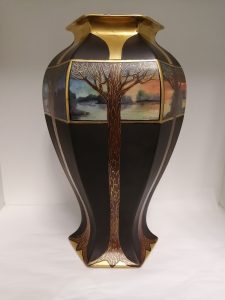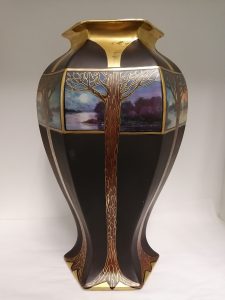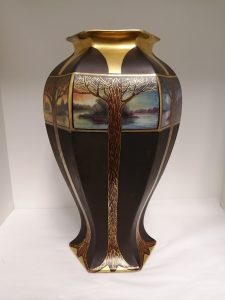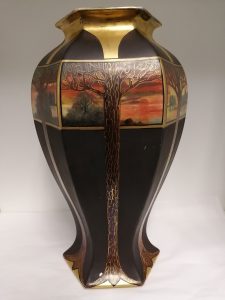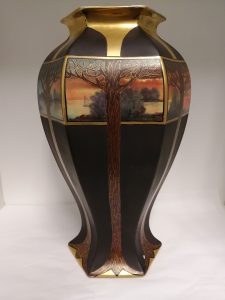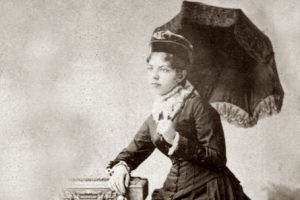Phoebe’s Painted Porcelian Vase c.1910-1930
Phoebe Amelia Watson (1858 -1947)
This vase, created by Phoebe Watson, is made of soft porcelain and painted with motifs characteristic of the Arts & Crafts movement. It is six-sided with each side depicting a gold and brown tree in the foreground and a landscape in the background. Each landscape depicts a different stage of a sunset, resulting in vibrant reds on one side of the vase and cool blues and purples on the opposite side.
Phoebe Watson may be known as the younger sister of landscape artist Homer Watson, but she was also an incredibly talented artist in her own right. Phoebe’s talents covered a variety of media including oil and watercolour paintings, yet perhaps her most successful medium was her painted porcelain.
At the turn of the century, pottery painting was one of the few art forms deemed suitable for women. This led to a ‘china mania” through middle- and upper-class society. Women in Great Britain and North America were soon spending their leisure time learning how to paint porcelain pottery. This art movement reached its height in popularity from 1880 to 1920 and was initially popular in Great Britain and France and later overseas in Canada and the United States. Over time, this hobby art form gained recognition in the art world as a legitimate art form and exhibitions of painted porcelain began to appear throughout Britain and Europe. In the United Kingdom, porcelain manufacturing factories were created to make blank pieces of pottery for painting. The factories had to create these pieces at a rapid pace to keep up the high demands thanks to pottery painting craze.
Phoebe Watson became a true master of china painting and would continue to create these porcelain art pieces until her death in 1947. According to some historians, Phoebe was first introduced to this art form while visiting her brother Homer and his wife Roxanna in England in 1887. Another historian cites that Phoebe Watson took lessons from famous German china painting artist Franz Bischoff as well in Toronto during the 1880s. Phoebe used her gained knowledge to teach lessons in this art form when she returned to Canada. She was also a member of the Women’s Art Association of Canada and she regularly exhibited her pieces in their shows. In 1896, Phoebe Watson received the greatest art commission of her life when the Women’s Art Association of Canada chose her to create twelve soup plates for the Canadian Historical Dinner Service.
